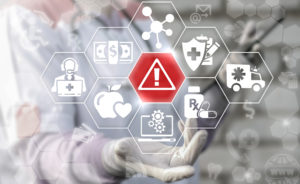3 of the biggest medical hazards patients will face in 2018
Posted in Health & Wellness on December 8, 2017
 As patients, we expect our health care systems to function smoothly and safely. Our nation’s clinics, hospitals and health care facilities should offer high levels of care as well as advanced treatments and technologies. Yet that doesn’t always happen.
As patients, we expect our health care systems to function smoothly and safely. Our nation’s clinics, hospitals and health care facilities should offer high levels of care as well as advanced treatments and technologies. Yet that doesn’t always happen.
The ECRI Institute, a nonprofit organization dedicated to improving health care, publishes annual reports on the biggest threats to patient health and safety. Its 2018 report identifies risks to watch out for in the new year. Some of them might surprise you.
- Contaminated mattresses
In health care settings, mattresses on beds and stretchers can be magnets for contaminants. Yes, they do have covers that are cleaned and sanitized between each use. Yet those covers sometimes fail. The harsh cleaning chemicals can lead to weaknesses and tears. Sometimes, rips are small enough to go undetected – that is, until blood or urine starts to seep out. More durable mattress covers and regular inspections can help ensure that fluids aren’t contaminating mattresses in the first place.
- Infectious endoscopes
Endoscopes – the snake-like instruments used in colonoscopies and other gastro-intestinal procedures – are some of the most difficult devices to properly sterilize. Hence, they’ve made an appearance in 8 of the ECRI’s last 10 annual hazard reports.
The cleaning and sterilization process involves multiple steps and demanding techniques. Improper processing – or even improper storage – of these intricate instruments can allow dangerous microbes to flourish, putting patients’ health at risk and contributing to the spread of deadly infections such as C. diff.
- Tech problems
Technology is an integral part of medicine. Health care systems rely on it for virtually all aspects of their operations. From state-of-the-art medical devices to electronic health records to hospital security systems, technology makes it easier for medical professionals to do their jobs well.
Yet these advances aren’t without risk.
Cybersecurity will remain a significant concern in 2018. Lapses could lead to serious privacy breaches. Even more alarming, malware and cyber attacks could cripple health care providers, cutting off access to critical records, disrupting patient care and even rendering life-saving medical devices useless.
Technology failures don’t always have a nefarious origin. They also result from improper configuration, system overloads, incompatible software updates and countless other variables. For example, an electronic monitor designed to alert the nursing station of a problem could malfunction without warning, jeopardizing the patient.
Looking ahead
It remains to be seen how these risks will play out in 2018. In the never-ending quest to improve patient care, awareness is the first step. And every step – no matter how small – that improves the quality of health care is a step in the right direction.